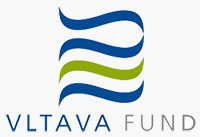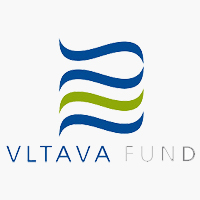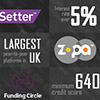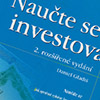The real performance of Vltava Fund SICAV
Recently, I published two articles about ‘Learn to Invest’ by Daniel Gladis. The book became my gateway into the world of investing. After finishing these pieces I was left with a feeling of disappointment, which is why I feel the need to share this follow up blog with you. It wasn’t the book that created this feeling (Gladis’ work is still something very special to me), but rather the way I felt after analysing the performance of the Vltava Fund SICAV, which featured prominently in ‘Learn to Invest’.
Firstly, I want to note that I initially read the book back in 2009, when the Vltava fund was experiencing an extremely successful period. In the coming years I didn't follow the performance of Vltava Fund because I had never been interested enough to invest in it.
Before I started writing my recent articles, when it came to the Vltava Fund I had only seen superlatives used to describe it, such as the “most successful hedge fund in the world in 2009”. Or I had seen performance figures relating to a very short period of two to three years (including 2009).
“Amazing”, I said to myself. “This should be a solid investment opportunity for my money.” But after deeper analysis I completely changed my mind. But why?
The Vltava Fund SICAV in brief
 The Vltava Fund SICAV, Plc. (www.vltavafund.com) is the oldest hedge fund in Central Europe, established in September 2004. The founder of the fund is Daniel Gladis, who also holds the position of CEO.
The Vltava Fund SICAV, Plc. (www.vltavafund.com) is the oldest hedge fund in Central Europe, established in September 2004. The founder of the fund is Daniel Gladis, who also holds the position of CEO.
If you want to invest in the Vltava Fund SICAV you must be an individual with assets of at least €1 million or a legal entity with assets totalling at least €5 million and be familiar with the following basic information:
| Basic information | |
|---|---|
| The minimum investment | € 125,000 |
| Management fee | 1% per annum |
| Incentive Fee (High Water Mark): | 10% per annum |
| Size of the fund | ~ € 740mil (june 2016) |
| The first business day | 1st September 2004 |
| Domicile | Malta |
2004 to 2007 - early success
After its initial foundation, the fund experienced a very successful period. It attributed to its clients an average annual net asset value (NAV) of 16.73%. For these first four early years it made nearly double NAV: 85.66%. In its inaugural year it traded for just for four months.
| Year | Net Asset Value |
|---|---|
| 2004 | 8.6% (4 months only) |
| 2005 | 29.8% |
| 2006 | 18.9% |
| 2007 | 10.77% |
2008 and 2009 – the world’s most successful hedge fund… really?
After a successful start for the fund, 2008 arrived and with it the global financial crisis that started an earthquake which had consequences well beyond the financial sector. Such was the fallout that even many major global companies and globally renowned investment banks failed to survive. The bank headed by Lehman Brothers, became the ultimate symbol of this crisis.
Net asset value (or NAV) is a mutual fund's price per share or exchange-traded fund's (ETF) per share value at a certain date. In both cases, the per share amount of the fund is calculated by dividing the total value of all the securities in its portfolio, less any liabilities, by the number of fund shares outstanding.
The effect of the 2008 crisis on the Vltava Fund was an astonishing loss of -85.6% (interestingly ,the same percentage loss attributed to the Lehman Brothers bank). But 2009, in contrast, saw the fund score its greatest success when it was named the most successful hedge fund in the world (Source: Hedge Funds Review) with the reflected NAV growth of 201.8%!
For this period it doesn’t make a sense to show average annual return because of the scale of the preceding 2008 collapse. The loss was so large than even the 2009 profit was not able to compensate for such a dramatic dip. The total ‘valuation’ for this short period was -56.66%.
| Years | Total NAV growth | Average annual NAV growth |
|---|---|---|
| 2004 to 2007 | 86,7% | 16.73% |
| 2008 to 2009 | -56.54% | -34.08% |
| 2004 to 2009 | -19.32% | -3.51% |
(2009) 2010 to 2015 - the (un)successful period that followed global financial crisis
If we look at returns in the years following the financial crisis (2009-2015) we will get a pretty attractive performance. The average NAV growth was 23.11% and the total NAV growth 328.53%. In my view that’s a very nice return for seven years. But it’s important to bear in mind that this return includes 2009, the fund’s most successful year 2009 when the NAV grew 201.8%.
So let’s evaluate the performance over a five-year period, thereby excluding 2009.
| Years | Total NAV growth | Average annual NAV growth |
|---|---|---|
| 2009 to 2015 | 328.53% | 23.11% |
| 2010 to 2015 | 68.26% | 9.06% |
| 2011 to 2015 | 8.68% | 1.68% |
| 2004 to 2015 | 14.56% | 1.14% |
To comprehensively demonstrate the historical performance of the fund, I have also connected to the above table a row with the total historical performance (i.e. 2004 to 2015). It doesn’t make for positive reading. Suddenly, you have to ask where is the fund that was once labelled as one of the best in the world (and still prides itself on that title)? One might say that things can’t be worse, but beware, the biggest surprise is yet to come. We still have to take into account the fund’s administration fees and inflation?
Vltava Fund vs. Standard & Poor's 500 index
The performance of hedge funds are very often presented in comparison to some of the world‘s indices - used as a so-called ‘benchmark’. The most frequently used world benchmark is Standard & Poor's 500 index (S&P 500). This is an American stock market index based on the market capitalisations of 500 large companies having common stock listed on the NYSE or NASDAQ.
Allow me a small description: in 1993 the investment management company State Street Global Advisors developed equivalent exchange-traded funds (ETF) of S&P 500 - the Standard & Poor’s Depositary Receipts (SPY) also known as SPDR. It is the largest and most heavily traded ETF in the world with net assets of $173 billion.
| Year | Vltava fund SICAV | SPDR | SPDR (Dividends Reinvested) |
|---|---|---|---|
| 2004 | 8.6% (4 months only) | 8.99% | 10.88% |
| 2005 | 29.8% | 3% | 4.91% |
| 2006 | 18.9% | 13.62% | 15.79% |
| 2007 | 10.77% | 3.53% | 5.49% |
| 2008 | -85.6% | -38.49% | -37% |
| 2009 | 201.8% | 23.54% | 26.46% |
| 2010 | 21.5% | 12.78% | 15.06% |
| 2011 | -13.7% | 0% | 2.11% |
| 2012 | 1.3% | 13.41% | 16% |
| 2013 | 21.3% | 29.6% | 32.39% |
| 2014 | 18.5% | 11.39% | 13.39% |
| 2015 | -7% | -0.73% | 1.38% |
At first glance, we can immediately see that the fund's performance compared to the S&P500 index jumps like a wave. A successful year alternates with the year in the red numbers and vice versa. According to various surveys, investors are willing to accept lower returns but as a trade-off require stability and security for their capital. Hedge funds offer this, but carry considerable administrative fees. I fear that the Vltava Fund, when one looks at the historical record, does not offer its investors a steady income, stability or a safe option for their investments.
Let us move a bit further on and look at the comparison of total returns and average annual performance.
| Year | Vltava fund SICAV | SPDR | SPDR (Dividends Reinvested) |
|---|---|---|---|
| Total return | 14.56% | 79.65 % | 127.95% |
| Annualized return | 1.14% | 5.08% | 7.21% |
Source: https://dqydj.com/sp-500-return-calculator/
How did inflation affect the profitability of the Vltava Fund?
And here it is again, that dreaded and tricky inflation that creeps around almost everywhere. Let's look at inflation from the perspective of Czech, UK and US investors and how inflation has affected (and affects) the profitability of the Vltava Fund from its inception (2004).
| Country | Total inflation (2004 - 2015) |
|---|---|
| Czech republic | 29.66% |
| United Kingdom | 32.4% |
| United states | 28.9% |
Source: www.inflation.eu
When I see how much inflation has impacted our money for the past 12 years and compare that with the 12 year return of the fund, I am left with the direct thought of the management of the Vltava Fund: "The greatest enemy, and at the same time investors' motivation, is inflation. Day after day, it slices out of money. Therefore, it must be a main function of the portfolio a real, i.e. inflation-adjusted, income".
We do not even have to be professors at Harvard University to evaluate at first glance the fact that the Vltava Fund during its existence even underperformed against inflation. On the contrary, the Vltava Fund’s returns were literally steamrolled by inflation in this full period. But be careful, we must not forget the clients’ capital that they put into the fund and which was also affected by inflation the whole time.
When total inflation was 29.66%, the real value of money fell by 11%. Which means, in real terms, if you invested in the Vltava Fund in 2004, at the beginning of 2016 you would have suffered a loss of 11%. And that’s without taking into account an administrator’s fees, which for a hedge fund is not exactly easy on the pocket.
The bottom line
With only a little exaggeration, probably the only advantage of this fund should be fees. In this industry typically fees are 2/20 High Water Mark. The Vltava Fund, in this case, holds its fees very low at 1/10. Please understand 1% is the management fee and 10% is the incentive fee on High Water Mark.
But I don't think that fees are the best reason for investors to pick a place to put their money. So what reason to invest in the Vltava Fund? Is it still an investment or just a lottery? Is it only speculation that the miracle year of 2009 will once return back again? In fact, the fund has underperformed against the Standard & Poor's 500 index and even against inflation!
Good luck with your next investment.







